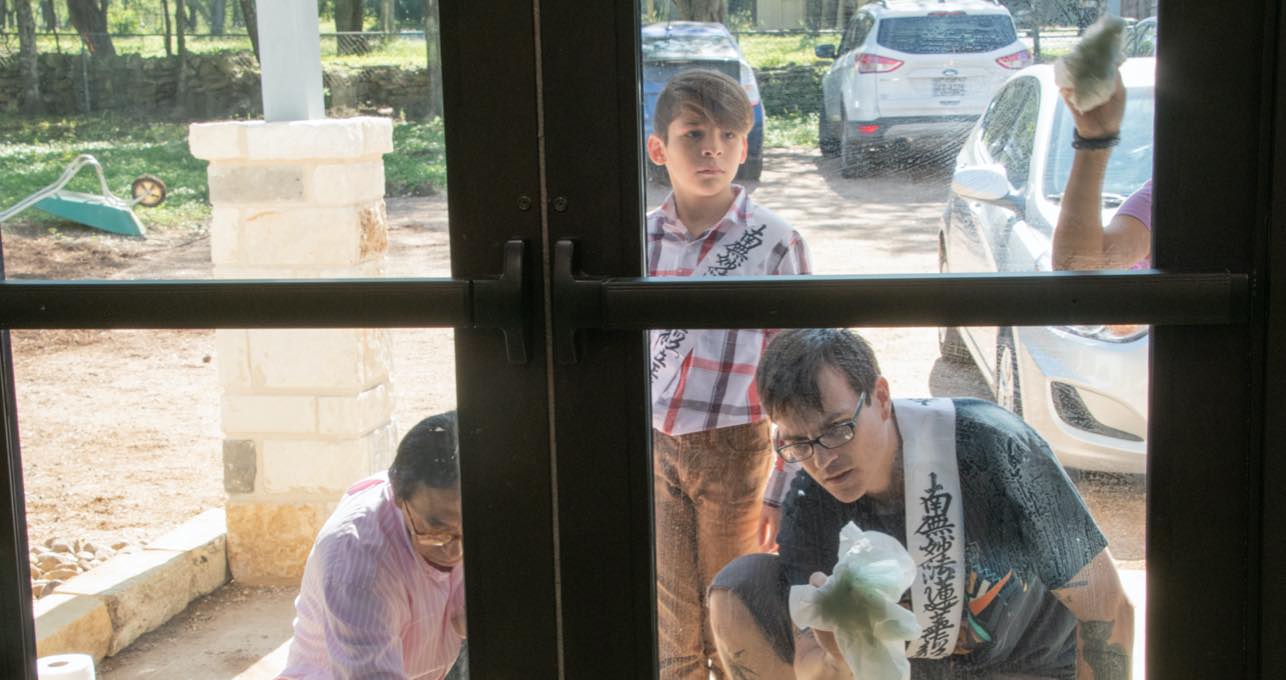Volunteer practice to serve at the centre

Volunteer practice to serve at the centre includes a role to make offerings to the Gohonzon installed in the centre and to serve and help people coming there for practice.
Some might say ‘Volunteer Practice sounds like cleaning duty. You should ask the cleaners’. However, Volunteer practice to serve at the centre is not meant for Rissho Kosei-kai (RK), but for ourselves to purify our heart and accumulate merits in gratitude for being allowed to have the place of the Way.
How to practise
Volunteer Practice to Serve at the Centre begins on the previous day. You will be advised to recite the sutra to pray for serving successfully and express gratitude for an opportunity to purify your heart. Please be mindful of your family, who allow you to take time to go to the centre.
In the beginning, we participants are recommended to make a vow in our mind of elevating ourselves to higher levels in spirituality aiming towards buddhahood. Senior practitioners possibly advise on the day’s mind-set. For instance, they might share such story before sweeping up outside the centre: ‘Chulapanthaka had been instructed by Shakyamuni Buddha to sweep and simply chant “get rid of the dust, get rid of the impurities”, and in doing so was awakened to the true meaning of the words, which related to getting rid of the dust and impurities of greed and desire and brushing and polishing our buddha nature’. Having themes for the day’s practice will be critical for the meaningfulness of the whole volunteer practice of the day. Perfunctory practice will end up only wearing us out.
At the end of the practice, honest reflection and sharing in hoza would be effective in showing us both how our mind has moved and how we think the Buddha has taught us through the phenomena experienced during the volunteer practice. The interaction with Sangha members and the Dharma insight suggested by the hoza leader will help us acknowledge our in-depth consciousness, the Buddha’s compassion and the wondrous Dharma which we did not realise. Such experience will also bring joy to us.
Good for practice of generosity
What is the significance of Volunteering to Serve at the Centre in terms of Buddhist teachings?
Volunteer Practice is an action to devote our bodies towards the happiness of others. Thus, it is the practice of generosity (‘donation of body’), which is the first practice of the Six Paramitas (Perfections), teaching for bodhisattvas. Sharing with others during the volunteer practice the preciousness of the teachings that we learned, or the wisdom of living that helps daily lives is ‘donation of the Dharma’. We may ‘donate money’ to express gratitude to the Buddha when working on the role. We may also have to pay travelling expenses to the centre, including train fare and petrol, which then become a donation because they are spent by us towards Buddhist practices.
The foremost merit of Volunteer Practice is to allow us to plant many roots of virtue at once.
Secondly, interaction with and serving many Sangha members help us become more conscious about right speech and action. Persistence will enable us to habituate it. In other words, through volunteering we can unconsciously learn and practise the Eightfold Path, a core teaching of Shakyamuni Buddha.
Thirdly, Volunteer Practice helps us get healthier not only in mind but also in body. We see many members practising wholeheartedly and finding improvements in health.
Volunteer practice is a practice which leads to many people’s happiness through preparing the better place of the Way and allows us to plant roots of virtue. Someone who is sick may be advised to donate their bodily actions, someone who is poor may be asked to donate some money and someone who is easily angered, sad or hateful may be asked to proclaim the Dharma as much as they can. Such practices will cause a hundred-and-eighty-degree turn in our lives and help us become virtuous enough to achieve true happiness. Volunteer practice to serve at the centre will invite us towards this path.